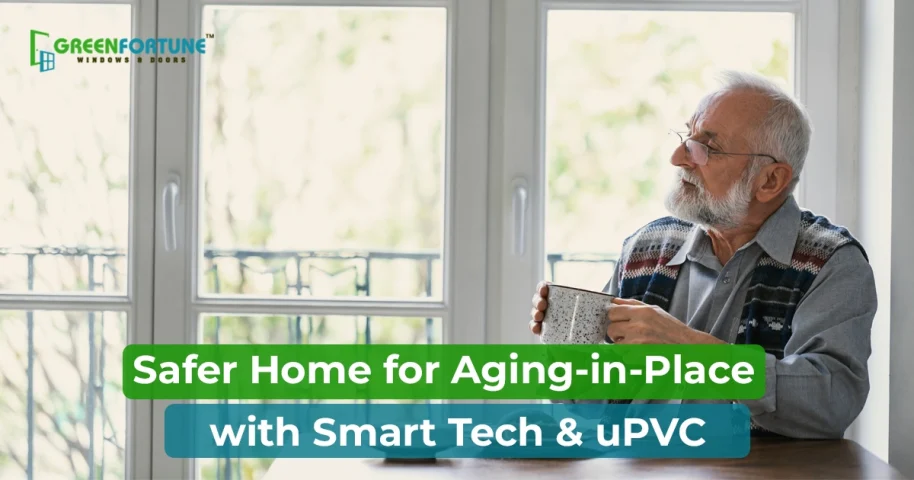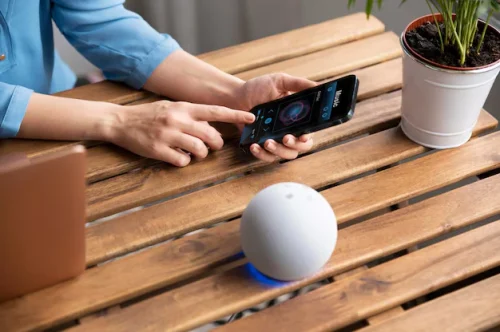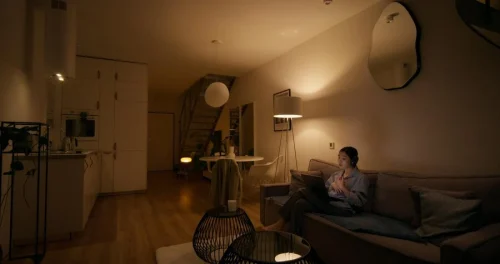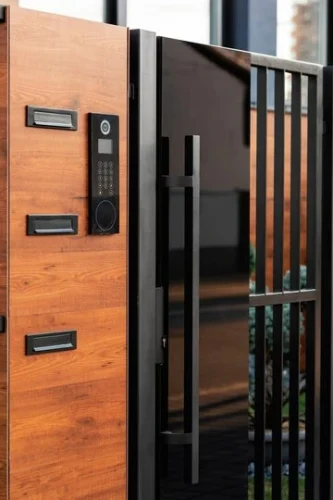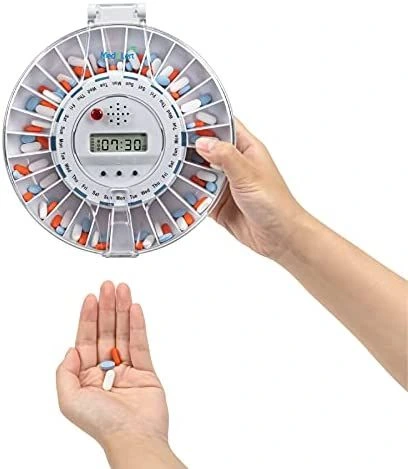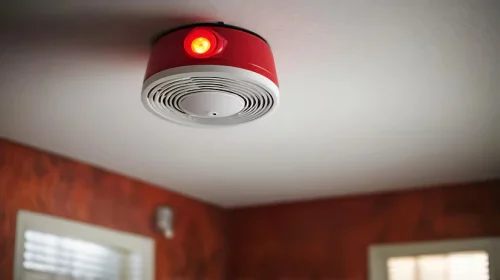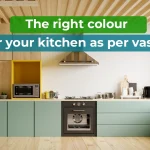
Kitchen Colour Vastu Shastra 2025: The Best & Worst Colours!
February 20, 2025
How PVC Ceiling Panels Are Reshaping Interiors from POP to Perfection
February 21, 2025As people age, everyday tasks at home can become challenging and even risky. Slippery floors, poor lighting, and hard-to-reach spaces can lead to accidents. That’s why aging-in-place solutions help seniors live safely and comfortably in their homes without constant assistance. Small changes can make a big difference and that's what we will discuss through this guide. The discussion will be around modification, smart technology, and the right furniture and fixtures.
Essential Home Modifications for Senior Safety
A home should be a place of comfort, not a source of risk. Simple modifications can prevent risks by improving mobility and making daily tasks easier. Below are some essential modifications to consider:
- Install Slip-Resistant Flooring: Slippery floors increase the risk of falls. Replacing tiles with non-slip materials or adding textured mats can improve traction. Carpets should be low-pile to prevent tripping, making movement safer and easier for seniors.
- Improve Lighting in Every Room: Poor lighting can lead to accidents. Bright LED lights in hallways, staircases, and bathrooms help improve visibility. To reduce the risk of falls in the dark, motion-sensor lights are useful.
- Add Grab Bars and Handrails: Bathrooms and stairways are common places for slips. Installing sturdy grab bars near toilets, showers, and bathtubs provides extra support. Handrails along staircases improve balance and stability, making movement safer.
- Lower Shelves and Cabinets: Hard-to-reach storage can cause strain or accidents. Lowering kitchen shelves and installing pull-out drawers make everyday items more accessible. This reduces the need to climb or bend, preventing injuries.
- Widen Doorways for Easy Access: Seniors using walkers or wheelchairs need more space to move. Widening doorways improves accessibility and reduces the chances of bumping into door frames. Smooth, level thresholds also prevent tripping hazards.
Smart Technology for Independent Living
Modern technology has made aging at home safer and more convenient. Smart devices help seniors with daily tasks, improve security, and provide emergency support. With the right smart home solutions, seniors can maintain independence while reducing risks. Here’s how technology makes life easier:
Voice-Controlled Assistants
Voice-controlled assistants like Amazon Alexa and Google Home help seniors control lights, set reminders, and call family using simple voice commands. They are useful for those with mobility challenges who struggle with switches or remote controls.
Motion-Sensor Lights
Motion-sensor lights turn on automatically when someone enters a room, improving visibility in dark hallways and bathrooms. This prevents falls by eliminating the need to find switches in low-light areas.
Smart Door Locks and Security Cameras
Smart door locks let seniors lock or unlock doors remotely, while security cameras and video doorbells help monitor visitors. These features provide extra safety, especially for those living alone.
Automated Medication Dispensers
Automated medication dispensers release the correct dose at the right time with an alarm or voice reminder. This prevents missed doses and medication errors, ensuring seniors stay on track with their prescriptions.
Source: Pinterest
Emergency Alert Systems
Emergency alert systems allow seniors to call for help with the press of a button. Some advanced versions detect falls automatically and alert emergency contacts or medical services without any action needed.
Technology | Purpose | Benefits |
Voice-Controlled Assistants | Hands-free control of devices, calls, and reminders | Helps seniors stay independent and connected |
Motion-Sensor Lights | Automatic lighting for better visibility | Reduces falls and improves night-time safety |
Smart Door Locks & Cameras | Remote security monitoring and keyless access | Prevents intrusions and increases safety |
Automated Medication Dispensers | Timed medication release with reminders | Reduces missed doses and medication errors |
Emergency Alert Systems | Quick access to emergency assistance | Provides instant help in case of accidents |
Aging-Friendly Furniture and Fixtures: Why uPVC is the Best Choice
Choosing the right furniture and fixtures is crucial for aging-in-place homes. Traditional wooden or metal furniture can be heavy, high-maintenance, or prone to damage. uPVC furniture offers a durable, low-maintenance, and safer alternative, making it the best choice for those who want a hassle-free and comfortable living space.
1. Lightweight and Easy to Move
uPVC furniture is much lighter than wood or metal, making it easy to move or rearrange. This is helpful for those who may struggle with lifting heavy objects or frequently adjusting their space for convenience.
2. Water and Termite Resistant
Unlike wooden furniture, uPVC furniture does not absorb moisture or attract termites. This makes it perfect for kitchens, bathrooms, and humid areas where traditional materials often get damaged.
3. No Sharp Edges for Extra Safety
Many uPVC fixtures are designed with smooth, rounded edges, reducing the risk of injuries from accidental bumps or falls. This ensures a safer environment for those with mobility challenges.
4. Low Maintenance and Long-Lasting
Unlike wood, uPVC furniture does not require polishing, painting, or frequent repairs. It stays strong and looks new for years, making it a cost-effective choice for aging-friendly homes.
5. Fire and Weather Resistant
uPVC materials are naturally fire-resistant and do not warp or fade due to weather conditions. Whether used indoors or outdoors, they remain durable without extra care or maintenance.
Switching to uPVC furniture ensures a safer, more comfortable, and maintenance-free living space, allowing individuals to age in place without worrying about constant repairs or safety hazards.
Final Thoughts
Creating a safe and comfortable home is essential for aging in place. Simple changes like installing smart technology, making modifications, and choosing uPVC furniture can greatly improve safety and convenience. With the right adjustments, aging individuals can enjoy independence, peace of mind, and a hassle-free living environment for years to come.
Frequently Asked Questions
1. How can you ensure safety for the elderly at home?
Install motion-sensor lights, grab bars, and non-slip flooring to prevent falls. Smart security systems and emergency alert devices add extra protection. Simple home modifications like wider doorways and easy-to-reach switches make daily activities safer and more convenient.
2. How can you make a home safe for seniors?
Below are some ways to make a home safe for seniors:
- Reduce trip hazards by securing rugs and clearing pathways.
- Use voice-controlled assistants for hands-free control of lights and appliances.
3. What type of furniture is best for aging in place?
Lightweight, sturdy, and low-maintenance furniture is ideal. uPVC furniture is the best option as it is durable, termite-proof, and easy to clean. It also has smooth edges, reducing injury risks, and lasts longer without the need for constant repairs.







